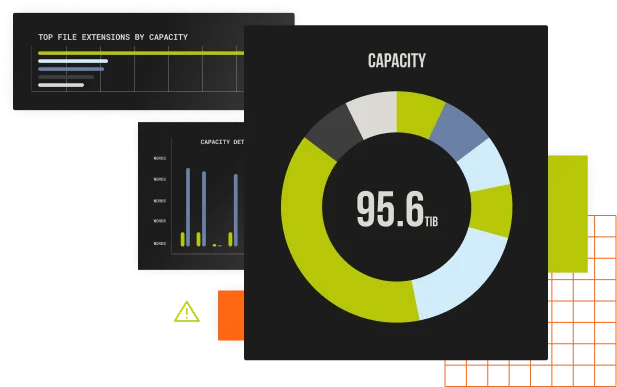Up to 90% of All Data Is Unstructured Excluding It From Your GenAI Strategy Does Not Compute
StorageMAP delivers the analytics and mobility to feed data to your next generation applications
Derive Value from Existing Data
As GenAI continues to rapidly mature, many organizations are exploring how they can now tap their massive resource of unstructured data to improve customer experiences, provide better customer support, and gain insight into product improvements. StorageMAP’s ability to mine billions of files and help customers make sense of what they have, can help drive better use of unstructured data in training GenAI models.

Better Data Equals Better Results
One of the critical steps in creating datasets to be used for training, fine tuning, or augmenting an LLM is identifying the data to be included in the overall processing pipeline. Certain types of files might need to be included whereas other types of files are explicitly excluded from the process. StorageMAP provides the ability to target the desired characteristics of training data and then feed that data into the processing pipeline.

The Journey Starts Before the Data Lake
Many solutions addressing the processing of GenAI training data start at the data lake. The reality is that data is spread out across many different storage systems across many locations and likely a mix of cloud and on-premises systems. StorageMAP provides the visibility, insight, and analytics needed to identify desired data no matter where it is stored in the environment. StorageMAP also provides the muscle to quickly copy large amounts of training data to the data lake where it can continue its journey through the GenAI processing pipeline.

A Platform Built for the Future
To deliver on the promise of complete unstructured data management, StorageMAP’s fundamental architecture is designed to be future proof for the great influx of unstructured data:
Vendor neutral architecture to support the hybrid cloud.
Scalable in both capacity and number of files.
Interoperable with the nuances of thousands of storage system implementations.
Transparent to the environment with no impact on data path.
No Lock-in to proprietary data formats with zero data transformation.
Automated actions that allow you to implement and monitor policies.